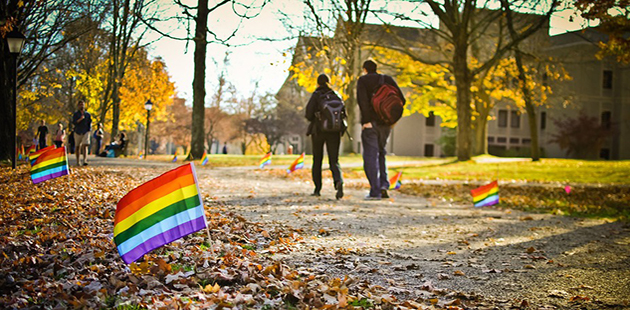 Australian universities still have much to do if they are to provide the right support to lesbian, gay, bisexual, transgender and intersex students (LGBTI), a guide to be launched today (Monday 11 May) has revealed.
Australian universities still have much to do if they are to provide the right support to lesbian, gay, bisexual, transgender and intersex students (LGBTI), a guide to be launched today (Monday 11 May) has revealed.
The Australian LGBTI University Guide found that while many Australian universities are making headway in supporting LGBTI students they still lag behind peer institutions overseas such as in the UK.
- While most Australian universities had anti-discrimination policies in place, only one-in-five accurately reflected current legal protections for LGBTI people
- Only a third of universities had mandatory training in place for existing staff in regards to equal opportunities including LGBTI students
- Specific sexual health advice is also generally lacking, despite the continued risk to gay men in regards to HIV
- There was a concern that, in many cases, inclusion of trans* and intersex students was ‘by acronym only’ with little evidence of in depth support or information
- Universities scored well on the existence of LGBT student groups and staff ‘ally’ networks
The guide is a joint initiative of the NSW Gay and Lesbian Rights Lobby (GLRL), Star Observer, Out for Australia, Organisation Intersex International and Transgender Victoria and has been designed to give students information about how universities cater for diversity of sexual orientation, gender identity and for those with intersex status.
Universities were assessed on the basis of information that is publicly available through university and students’ union websites with the process designed to mirror the experience of a prospective LGBTI student applying to study.
The team behind the guide used a checklist covering factors such as policy, health and welfare support, staff training and the existence of an ally network to examine the measures each university is taking to provide a learning environment that is safe and supportive for LGBTI students.
NSW GLRL Convenor, Justin Koonin said he believed it was vital opportunities available to students at university are extended to all, including those who are LGBTI.
“We have produced this guide so that prospective LGBTI students are able to have a sense of which learning environments may best support their needs,” said Mr Koonin. “This guide is also for universities, to provide an understanding of the ways in which they are currently catering well for LGBTI students, and also those areas where improvement would be welcome.”
Koonin acknowledged both the progress that many universities have made on LGBTI issues, and the considerable work that remains.
“It is clear that some Australian universities are going to significant lengths to include LGBTI people and the fact that some universities are moving beyond tolerance to active engagement with LGBTI students is very pleasing,” said Mr Koonin. “Others have a way to go, and we hope that this guide will provide a road map for these universities on where they could improve.”
The guide will be launched by Human Rights Commissioner and defacto Commissioner for Sexual Orientation, Gender Identity & Intersex Issues, Tim Wilson, at the Australian Human Rights Commission on Monday evening. For more information, visit: www.lgbtiuniguide.org.au for details.
